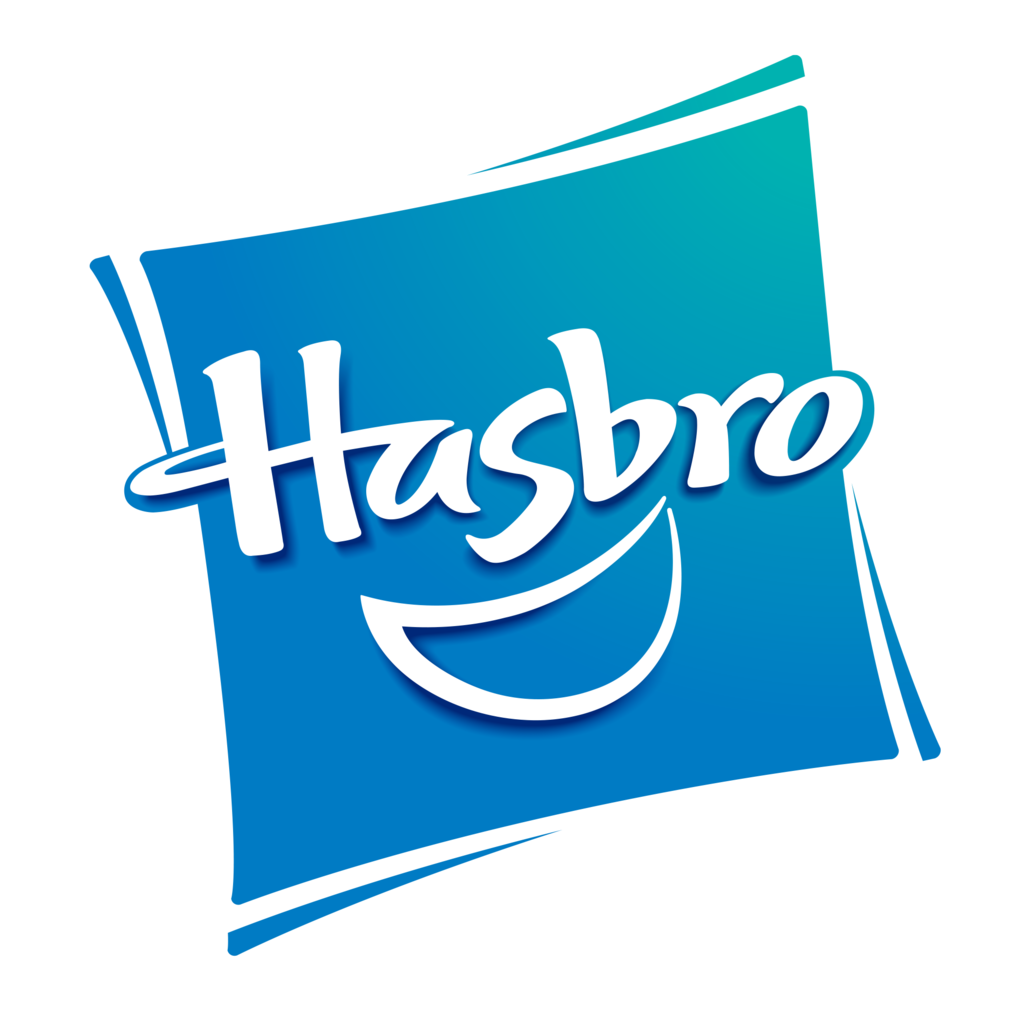Title of the work
Country of the First Edition
Country/countries of popularity
Original Language
First Edition Date
Official Website
monopoly.hasbro.com (accessed: May 4, 2021)
Genre
Board games*
Target Audience
Crossover
Cover

We are still trying to obtain permission for posting the original cover.
Author of the Entry:
Ayelet Peer, Bar-Ilan University, ayelet.peer@biu.ac.il
Peer-reviewer of the Entry:
Lisa Maurice, Bar-Ilan University, lisa.maurice@biu.ac.il
Daniel A. Nkemleke, University of Yaoundé 1, nkemlekedan@yahoo.com

Logo retrieved from Wikipedia, public domain (accessed: February 2, 2022).
Hasbro (Company)
Hasbro Inc. is an American conglomerate from Pawtucket, Rhode Island, which includes toy, board game, and media assets. Hasbro owns Parker Brothers, Milton Bradley and more. Among the company's products are: Transformers, G.I. Joe, Power Rangers, Monopoly, Furby, Twister, and My Little Pony.
Source:
en.wikipedia.org (accessed: February 2, 2022).
Prepared by Ayelet Peer, Bar-Ilan University, ayelet.peer@gmail.com
Summary
This Monopoly board games features all the classical Monopoly traits, purchasing places, adding houses and hotels, a "Go to Jail" option, surprise cards. The setting of this game is the various wonders of the ancient world which the players can purchase. The winner of the game is the player with the most amount of money. The players also receive a "passport" they need to stamp for every attraction they have visited.
The wonders of the world (natural as well as human-made, ancient and more modern) which appear on the board are: Niagara Falls, Mt. Everest, Great Barrier Reef, The Grand Canyon, Angel Falls, The Corcovado, Eifel Tower, the Colosseum, Stonehenge, The Taj Mahal, The Moai Statues, Machu Picchu, Angkor Wat, Petra, The Great Wall of China, Lighthouse of Alexandria, The Colossus of Rhodes, The Mausoleum at Halicarnassus, The Statue of Zeus at Olympia, The Temple of Artemis at Ephesus, The Hanging Gardens of Babylon, The Great Pyramid at Giza.
Besides a hot-air balloon and an ancient car, the set pieces for the players also include a Roman chariot for two horses (Biga)
Each of the cards which provides the tariff for the property also includes brief information on the site itself.
Analysis
This Monopoly game provides the added bonus of the information cards of the various sites. The players can thus not only play the game but also receive some information on these ancient wonders. The facts mentioned on the back of the cards can be the number of tourists to each location or the site's origin and purpose. In this review we focus on the Greco-Roman sites.
As noted in the summary, the games includes natural wonders as well as man-made structures from various historical times. The aim was probably to provide all-encompassing and universal "tastes" of world wonders form pre-historic times to more recent ones, thus both celebrating human achievements as well as appreciating the beauty of the natural world.
Regarding the ancient Greco-Roman world, it is perhaps surprising that the Parthenon is not included; perhaps the game creators wanted to highlight less well-known sites, such as the Lighthouse or the Colossus beside the well-known Colosseum. The chosen sites therefore provide information and educate the players on the various sites that no longer exist (such as the hanging gardens of Babylon).
The brief information presented on the cards provides the necessary data on the sites - when they were built (and destroyed), for whom, why they were built etc. For example, on the Temple of Artemis it is stated that "The goddess Artemis (also known as Diana), was the goddess of hunt and fertility. Het temple stood at Ephesus, which is now Selçuk in Turkey, and was almost entirely built from marble. In 356 C.E., Herostratus, native of the region, burnt the temple in order to perpetuate his name forever." As this example shows, the text includes informative data on the Temple but also the interesting fact about the arsonist. Not mentioned however, is that Artemis was a Greek goddess and that Diana was her Roman name. Perhaps the creators thought it was a fact well-known to most players?
In the information on Zeus statue, the date of creation is not given, but it is stated that it was made by Phidias for Zeus' temple in Olympia. The information focuses on the impressive size of the statue (12 meters). There is no description of the actual stature, probably due to lack of space on the card. The limited space for information forces the creators to select what they deem the most interesting and captivating information on each site. They probably wished to include important data as well as some anecdote if possible. For example, the information of the Lighthouse indicates that according to legend, the light from the tower could burn ships by using a mirror.
Regarding the Colosseum, the information specifies its size and purpose (gladiators and animal battles), yet does not indicate the emperor who built it or the use of conquered treasure and loot to finance it. Perhaps the creators did not wish to include stories of battles and defeats.
An indication of modern location appears in the text on the Mausoleum, where the card indicates that the statues which adorned the façade of the Mausoleum can be seen in the British Museum. It is possible that the creators of this specific games were situated in the UK, but it is also possible that they wanted to show the players that some of the ancient relics can bee seen in museums today.
Addenda
The review refers to the Hebrew version by Kodkod company 2004.
The Israeli company, Kodkod, provides a Hebrew version of the game.


